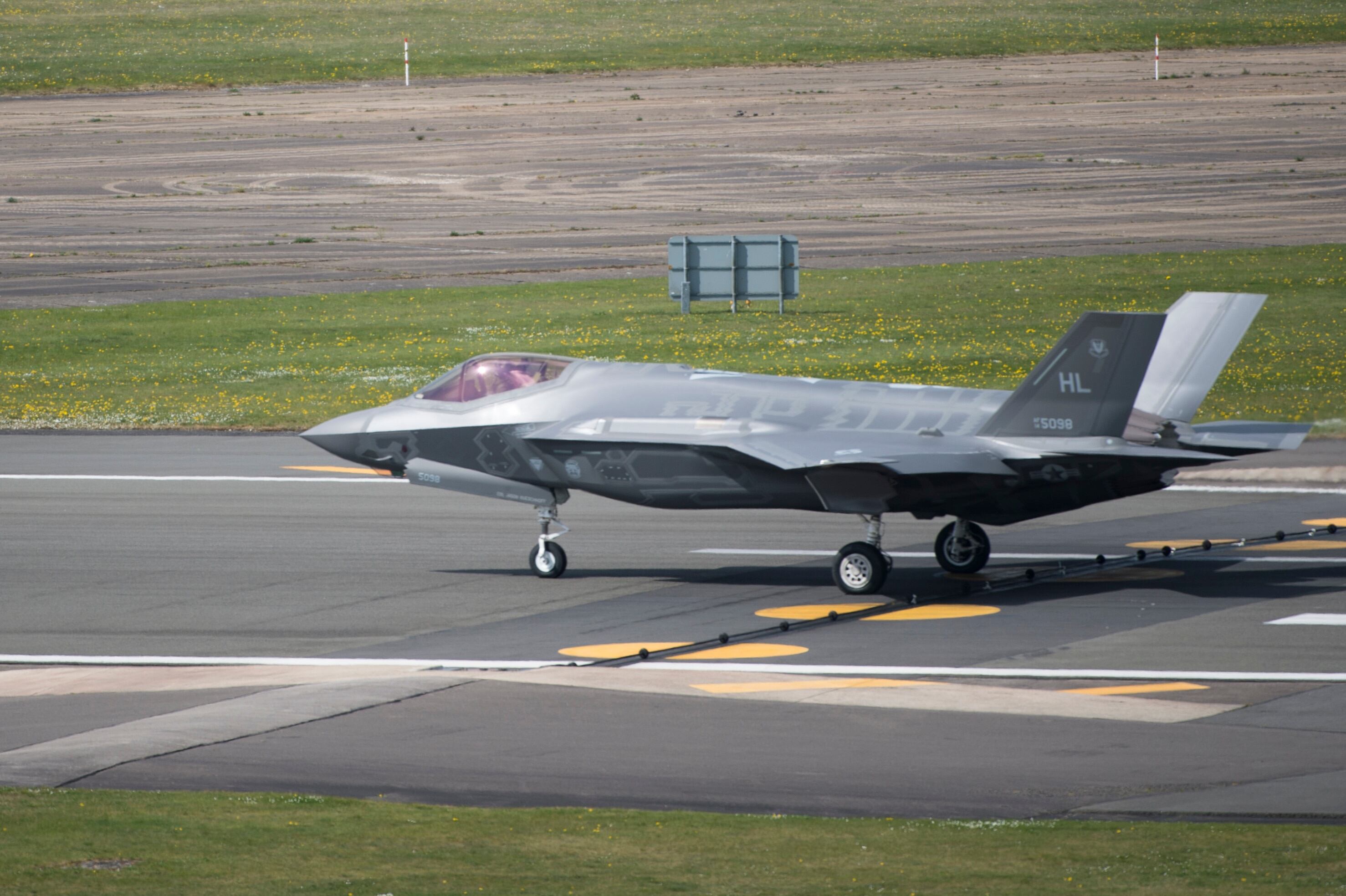NATIONAL HARBOR, Md. — The Pentagon’s director of defense pricing is helping the F-35 joint program office nail down a better deal on a block buy, the program head said Monday.
Earlier this year, Shay Assad, the official charged with scrutinizing the price of weapon programs, announced that his office would conduct a “deep dive” to find the “true cost” of the joint strike fighter. The effort would focus on delayering the supply chain and incentivizing second-tier suppliers onward to invest their own money to make production more efficient.
In an exclusive Sept. 18 interview with Defense News, Vice Adm. Mat Winter said Assad has already started making recommendations to the joint program office, or JPO, that are influencing contract negotiations, particularly the block buy that will encompass lots 12, 13 and 14.
“He’s a smart guy; he comes with credibility,” Winter said. “He’s got some other folks helping him, and they’re going to Lockheed, Northrop Grumman [and] BAE. They’re going to the big guys first, and then they’re going to start permeating down into the supply chain.”
“He continues to provide valuable information to the [program executive officer] to better inform my production negotiations with Lockheed Martin Aero,” Winter said. “You can read into that however you want. I can’t give you any more details on that right now” he added, although he acknowledged that the work is “helping to shape the block buy proposal.”
Lockheed is set to submit its proposal in the spring or summer of 2018, but Winter wants to see it faster, he said.
RELATED

Jeff Babione, Lockheed’s executive vice president for the F-35 program, said the company plans to present its block buy proposal early next year, and although he is optimistic on the timing, it will take a lot of work to finalize negotiations for three production batches.
“I think it would be naïve to think that that’s not going to take a lot of time just to look through the information, but it’s a great aspiration, and my commitment to [Winter],” he said. “What were doing with the block buy, while it’s not unusual for other programs, it’s certainly different for F-35, and as you know, every time we try to do something new for F-35, we find opportunities to snag a little bit.”
Lockheed and the JPO have already come to an agreement allowing the company to make economic order quantity buys with an understanding of how Lockheed would recover the funding when the block buy contract is finalized. The company has already begun to put orders in for about 450 airplane’s worth of components, Babione said.
“That is very encouraging. That will allow us to save a significant amount, just by allowing our supply chain to aggregate their buy,” he said. “We’re looking to put on order about $1.2 billion worth of material that will then be part of the block buy.”
Babione expressed some reservations about the work Assad’s team is doing, and although he maintained Lockheed would support the Pentagon throughout the process of the review, he stated that a “balanced and logical” approach is needed. Delayering the supply chain too much could compound risks at a critical time when Lockheed is ramping up its production rate, and disruptions could potentially result in delayed aircraft deliveries.
“We need to be careful on how we allocate the work so that we don’t increase the risk. We’ve just spent the last six, seven years getting the supply chain put into place so they can build the products that we need,” he said.
“We can’t do cost savings at any cost, and I’m not saying that’s what Mr. Assad will do, but I would say how this will go is still in front of us,” Babione added.
RELATED

In the month that Assad’s team has been working with Lockheed, he has indicated that he would like to see more subsystems of the F-35 to be procured as government furnished equipment — meaning that the Defense Department would contract directly with the subcontractor and then hand those items over to Lockheed Martin.
Generally speaking, the Defense Department has procured ejection seats, radar and communications gear as GFE on other aircraft, but “specifics for F-35 I think are to be determined,” Babione said.
Increasing the use of GFE can be a smart move, but the department and Lockheed need to work together to make sure value is being added, he said.
“It’s more than just buying something. We count on these companies to integrate and manage their supply chain, and if we’re not careful, we could end up disrupting that and it could potentially increase the cost of the products and services,” Babione said, adding, “Or worse, we don’t get a part delivered, and now the customer doesn’t get an airplane.”
Valerie Insinna is Defense News' air warfare reporter. She previously worked the Navy/congressional beats for Defense Daily, which followed almost three years as a staff writer for National Defense Magazine. Prior to that, she worked as an editorial assistant for the Tokyo Shimbun’s Washington bureau.








